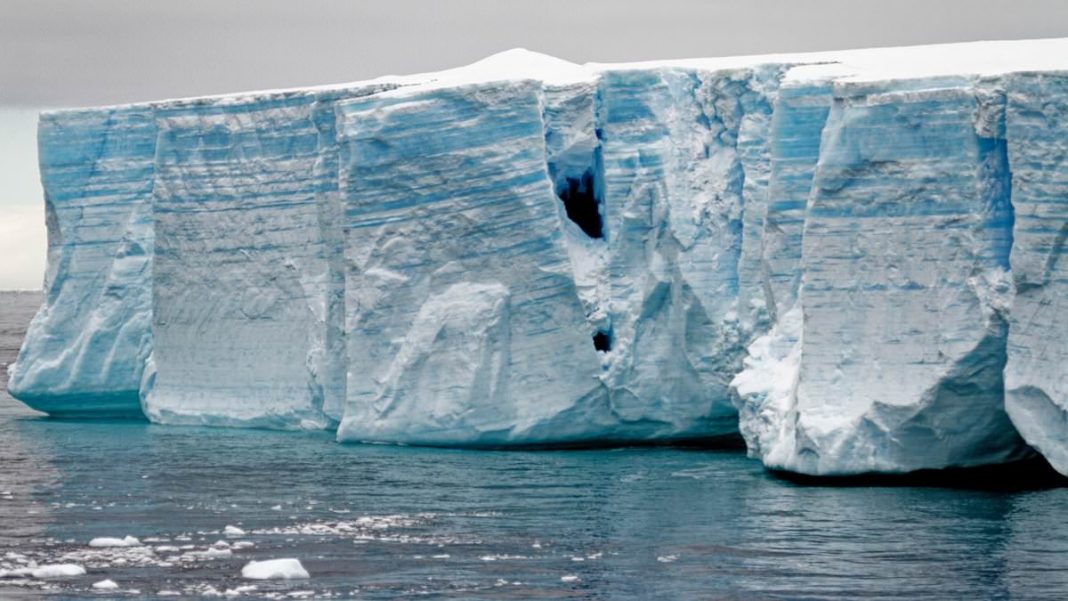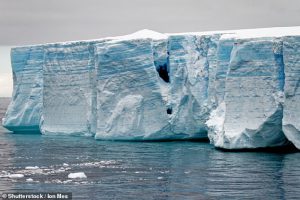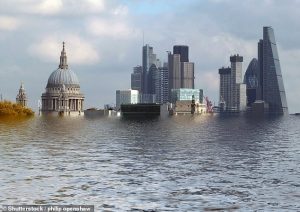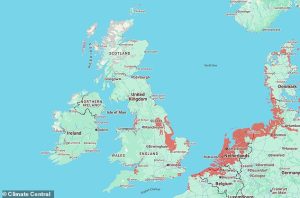Antarctic Ice Shelves Face 59% Collapse Risk, Threatening 32ft Sea Level Rise
Key Takeaways:
- 59% of Antarctic ice shelves could collapse by 2300 under high emissions
- This would trigger up to 10 meters (32ft) of irreversible sea level rise
- Major global cities including London, Miami, and Shanghai face submersion
- The critical period for ice shelf viability is between 2085-2170
New research from Sorbonne University reveals a dire warning: continued high greenhouse gas emissions could trigger the collapse of 59% of Antarctica’s ice shelves by 2300, causing up to 10 meters (32ft) of irreversible sea level rise that would submerge coastal cities worldwide.
The study, published in Nature, identifies 2085-2170 as the critical period when most ice shelves would reach “likely non-viability.” Researchers emphasize this timeline is conservative, with collapse potentially occurring sooner due to additional factors like damage and calving.
Two Possible Futures
The research team simulated 64 Antarctic ice shelves under different emission scenarios. The results show starkly different outcomes:
- Low-emissions scenario (warming below 2°C): Only one ice shelf becomes non-viable
- High-emissions scenario (12°C warming): 38 ice shelves (59%) could disappear
Lead researcher Clara Burgard explained: “As they restrain the ice flow from the grounded ice sheet to the ocean through so-called buttressing, they represent a safety band around Antarctica. Their thinning and eventual collapse hence accelerates ice discharge into the ocean.”
Cities at Risk of Submersion
According to Climate Central’s Coastal Risk Screening Tool, a 32ft sea level rise would submerge:
- UK: Hull, Glasgow, Bristol, Portsmouth, Cardiff, and parts of London including Hammersmith and Westminster
- US: Entire coasts of Florida, Louisiana, and Texas, including Houston, New Orleans, and Miami
- Europe: Venice, Lisbon, Seville, and coastal areas from Calais to Denmark
- Asia: Much of Bangladesh, Shanghai, Ho Chi Minh City, and Karachi
The researchers concluded: “Our results show that current choices to change emission pathways could significantly affect the likelihood of the long-term loss of most Antarctic ice shelves.”
Global Sea Level Impact of Glacier Melt
Additional research shows the Thwaites Glacier collapse alone could raise sea levels by 10ft (3 meters), threatening cities from New York to Sydney. A 2014 US study projected dramatic increases in tidal flooding, with many East and Gulf Coast communities experiencing 24 or more floods annually by 2030.









